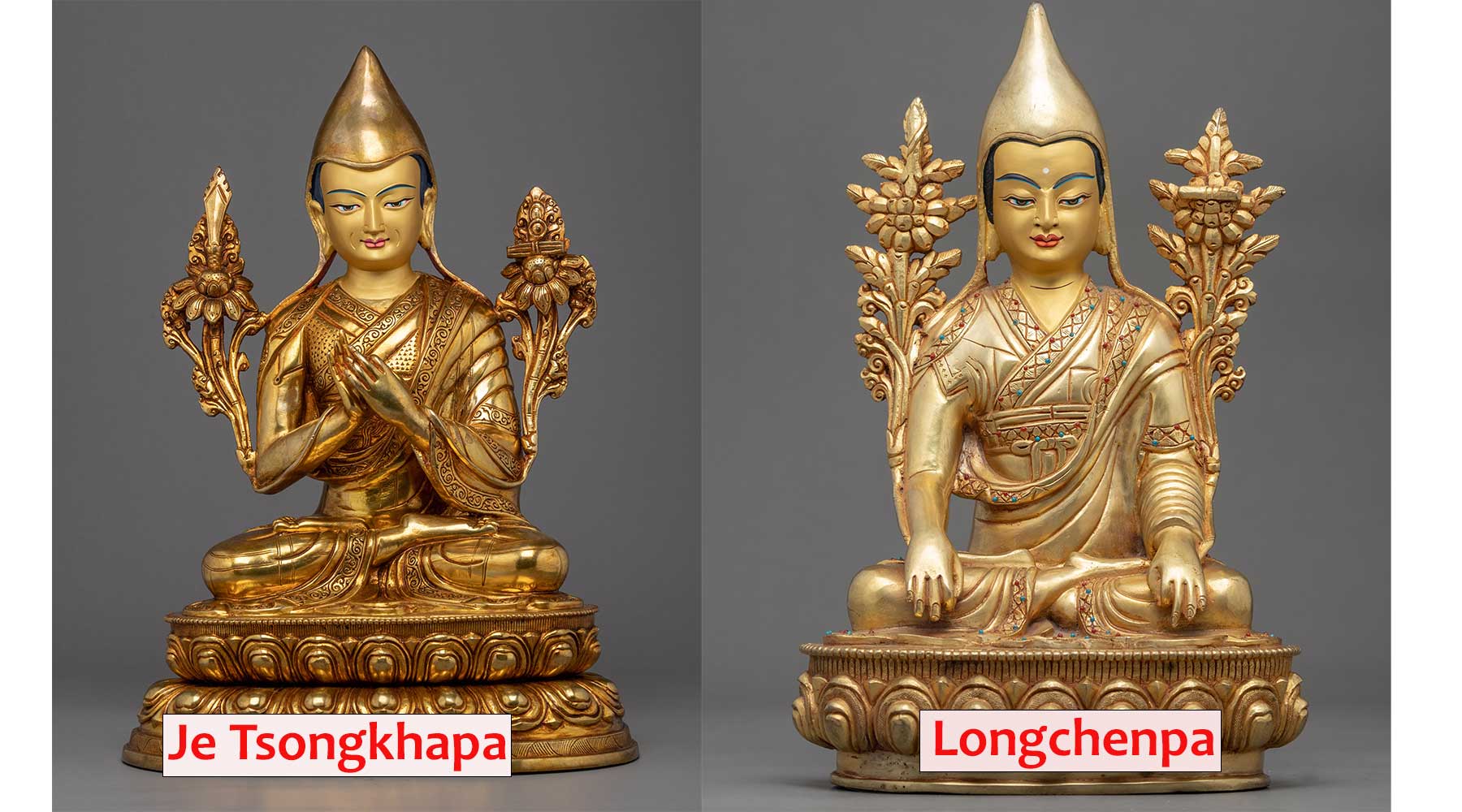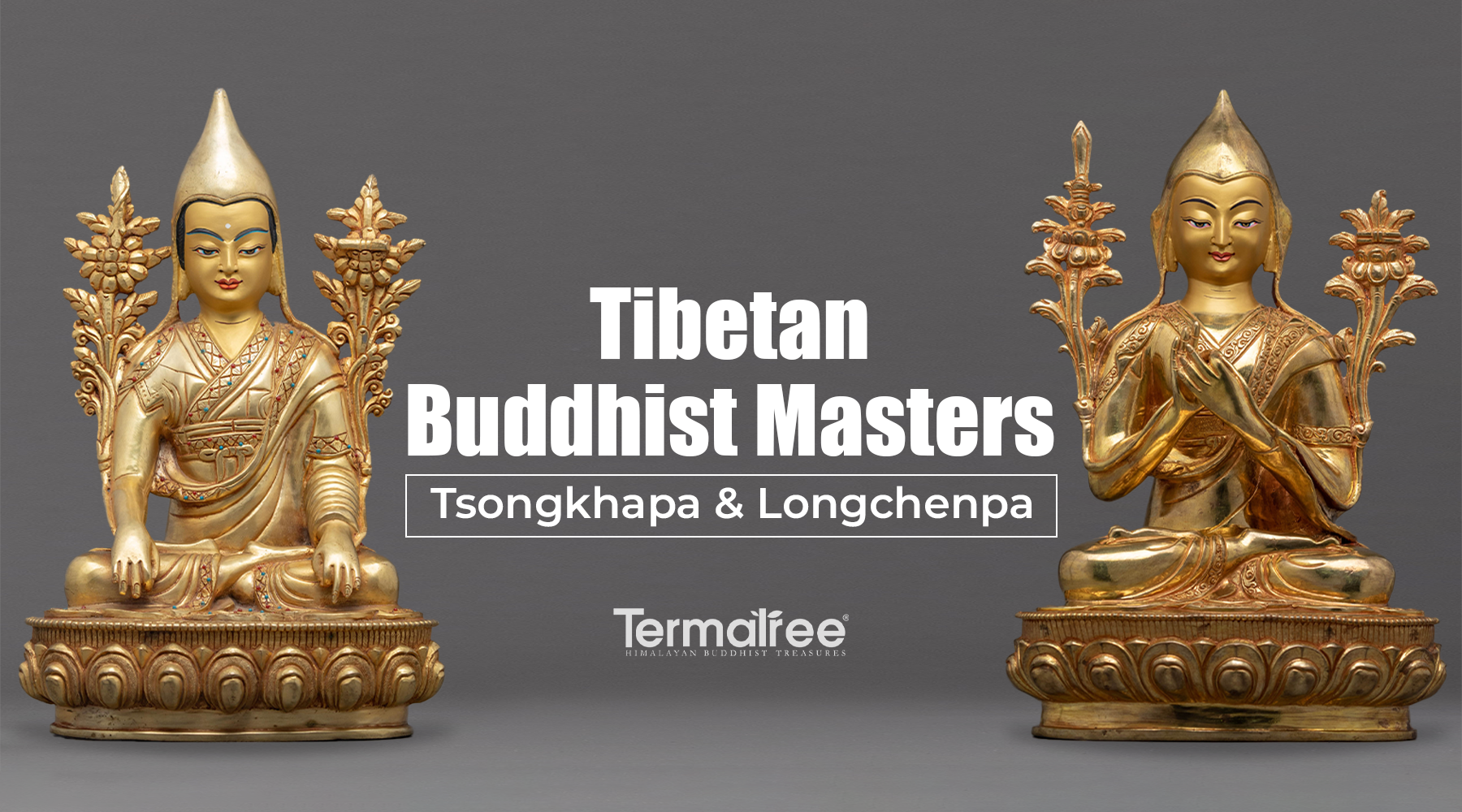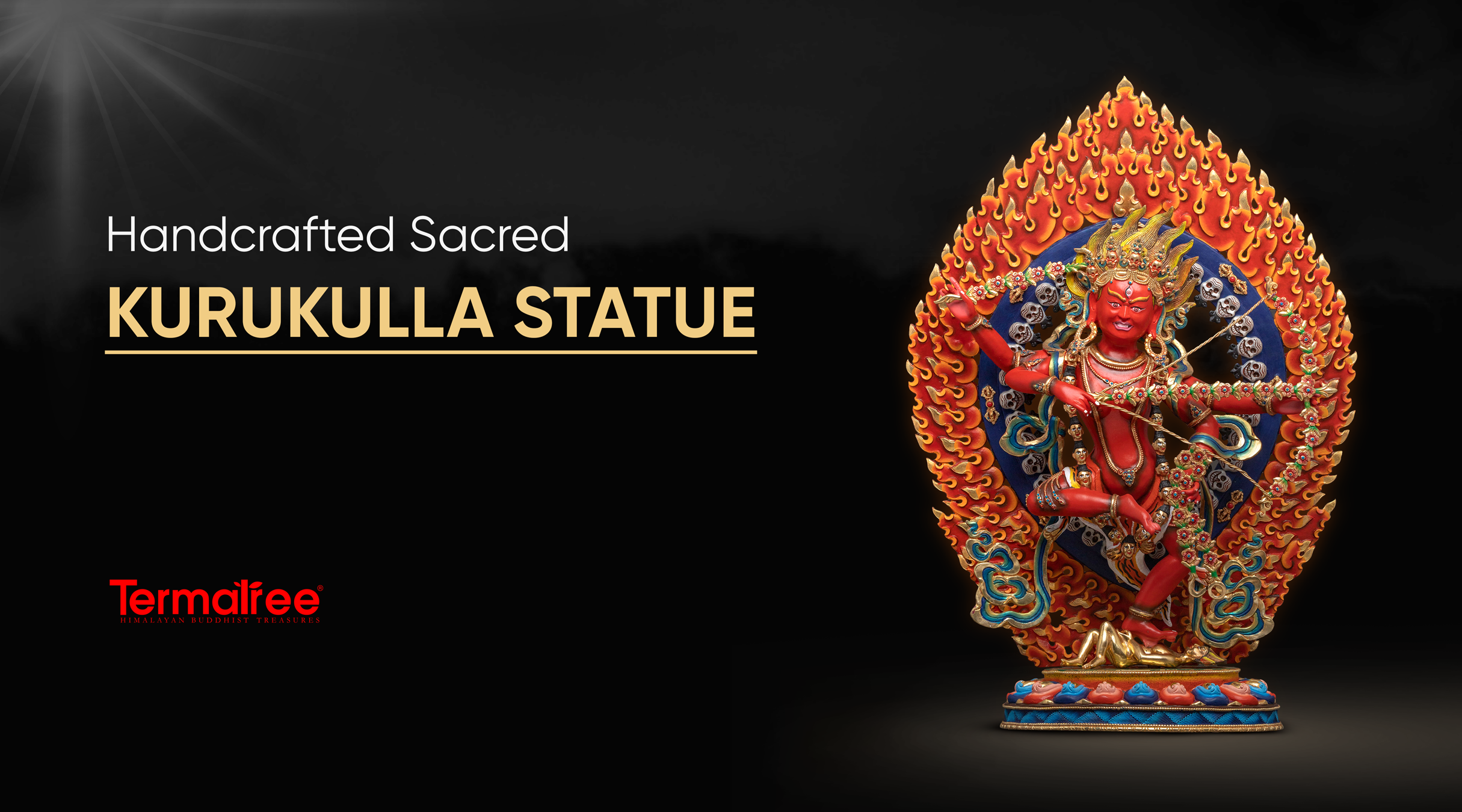Historical Tibetan Buddhist Master: Tsongkhapa and Longchenpa
Tibetan Buddhist masters are highly respected and accomplished individuals who have dedicated their lives to studying and practicing Tibetan Buddhism. They have achieved a deep understanding of the teachings and have attained high levels of spiritual realization.
The history of Tibetan Buddhism can be traced back to the 8th century CE when the great Indian master Padmasambhava brought Buddhism to Tibet. Since then, the tradition has been passed down through an unbroken line of masters, who have played a vital role in preserving and propagating the teachings.
The meaning of a Tibetan Buddhist master is someone who is considered an expert in the teachings of Buddhism and has attained a high level of spiritual realization through their practice. They are considered living examples of the teachings and are respected for their wisdom and compassion. The significance of Tibetan Buddhist masters lies in their ability to transmit the teachings and guide others on the path to enlightenment. They are considered holders of the living tradition and are looked to for guidance and inspiration. They also play a vital role in preserving and propagating the teachings, ensuring that they continue to be passed down from generation to generation.
Je Tsongkhapa (1357-1419) and Longchenpa (1308-1364) were two of the most renowned Tibetan Buddhist masters. Je Tsongkhapa was a founder of the Gelug Tibetan Buddhism school, also known as the “Yellow Hat” school. He is known for emphasizing the importance of study and practice and wrote many commentaries on the sutras and tantras.
Source: Enlightenment Thangka
Longchenpa was a master of the Nyingma school of Tibetan Buddhism, also known as the “Ancient Translation” school, and is considered one of the greatest masters of the tradition. He was a prolific writer, and his works cover a wide range of topics, including meditation, tantra, and Dzogchen, the highest teachings of the Nyingma school. Both Je Tsongkhapa and Longchenpa are known for their emphasis on the importance of study, practice, and devotion in the pursuit of spiritual realization.
Tsongkhapa Lobzang Drakpa (1357–1419)
Great Tibetan Buddhist Master Je Tsongkhapa, Losang Dragpa, established and expanded the Kadampa school of thought that Atisha had pioneered three centuries previously. The fourth of 6sons, Tsongkhapa, was born in Tsongkha (Tsong-Kha), Amdo, in 1357. Choje Dondrub Rinchen delivered gifts, a statue, and a message to the parents the day after Tsongkhapa was born. His umbilical cord's drop to the earth gave rise to a sandalwood tree. Each leaf, known as Kumbum (sKu-'bum), or a hundred thousand body representations, contained a natural expression of the Buddha Sinhanada (Sangs-rgyas Seng-ge sgra). Later, the Gelug monastery, known as Kumbum, was built on that site.
Everything the Tibetans required for their spiritual growth, from the first step of beginning a spiritual practice to the final realization of Buddhahood, was patiently imparted to them by Je Tsongkhapa. Thousands of Tibetans were motivated by Je Tsongkhapa's excellent example of moral purity, compassionate living, and profound, enlightening insight during this golden age in Tibet. His adherents earned the moniker "New Kadampas," and Kadampa Buddhists continued to practice his clean way of life and study his teachings.
He was one of Tibet's most significant historical and intellectual personalities. As the Gelug school's founder, he substantially contributed to reviving Buddhism in Tibet. Tsongkhapa was a scholar of sharp intellect and practical knowledge of the Buddhist tradition. He was regarded as an emanation of Manjushri, the bodhisattva of wisdom and compassion. He conducted several protracted retreats, and during these times, he saw profound visions, which inspired him to write many of his famous treatises, such as Lam Rim Chenmo or The Great Exposition of the Stages of the Path. He was a prolific writer who produced 210 treatises in 20 volumes, emphasizing the Sutra and Tanta combined ways. Additionally, he founded the renowned Ganden monastery.
Tsongkhapa prioritized study and practice throughout his life and had no time for displays of supernatural abilities. He had several visions of Manjushri, who gave him top-secret Tantric teachings, but he only revealed these to a select few experienced followers. He insisted on moral purity as the cornerstone of practical spiritual training and growth, which was one of his teaching's unique characteristics. He also offered a very lucid and in-depth discourse on the Vinaya. He selected the yellow hat to express his appreciation for the value of discipline- Yellow represents moral behavior and growth and is the base of everything because it is the color of the earth element.
He demonstrated the fundamental unity of the 3 yanas by outwardly behaving as a strict adherent of Vinaya discipline, internally upholding the Mahayana motivation of bodhicitta, and covertly engaging in advanced Highest Yoga Tantric practices. He also set an example and a method of practice for his followers.
Buddha And Guru Rinpoche Prophecy
Both Guru Rinpoche and Buddha Shakyamuni predicted Tsongkhapa's birth and accomplishments. A little boy who was a former incarnation of Tsongkhapa offered the Buddha a crystal rosary at the time of Buddha Shakyamuni and was given a conch shell in response. Manjushri was to be born as a boy in Tibet, build the Ganden monastery, and give my statue a crown, according to a prophecy made by the Buddha. Buddha gave the boy the future name Sumatikirti (Blo-bzang grags-pa, Losang Dragpa). A monk by the name of Losang Dragpa would be born close to China, be considered an emanation of a powerful bodhisattva, and turn a Buddha statue into a Sambhogakaya depiction, according to another prophecy made by Guru Rinpoche.
Buddhist Master Longchenpa
In the central Tibetan city of Yoru, Longchenpa Drime Ozer (1308–1364) was born into a family of Nyingma practitioners. Guru Padmasambhava's prophesied that Longchenpa will be the ruler of the Sutra, Tantra, and Dzogchen teachings. His intellect was evident even when he was just a child. At 19, Longchenpa enrolled in Sangphu Neuthog, the most renowned monastic institution in Tibet. His intelligence was unmatched, and he became its most well-known pupil. Because of his extraordinary ability, his classmates gave him the moniker Samye Lungmingpa, which means "He who recalls all the Buddha's teachings" (Bsam yas lung ming pa). Longchenpa understood that his wisdom was mainly derived from his intellectual mind. He concluded that it was time to build practice-based knowledge.
He was highly skilled and intelligent from a young age. His mother came from the prestigious Drom ('Brom) clan, with ancestors like Dromtonpa ('Brom-ston-pa), one of Atisha's main disciples. His father was an accomplished spiritual practitioner descended from direct Padmasambhava students. His family practiced the Nyingma lineage. As a result of his father's numerous teachings and initiations, Longchenpa was well-versed in challenging texts by age 10, including the Prajnaparamita in Twenty Thousand Verses and the Prajnaparamita in Eight Thousand Verses.
His contribution to the Nyingma lineage involves authoring new works that are connected to older ones that can be found all across Tibet. He elaborates on subjects including the Seventeen Tantras, Lamdre, and a summary of Dzogchen philosophy in his Seven Treasures and publications on Nyingtik.
His contribution to the Nyingma lineage involves authoring new works that are connected to older ones that can be found all across Tibet. He elaborates on subjects including the 17 Tantras, Lamdre, and a summary of Dzogchen philosophy in his Seven Treasures and publications on Nyingtik.
The Seven Treasuries consist of: The Wish-Fulfilling Treasury (yid bzhin mdzod), The Treasury of Pith Instructions (man ngag mdzod), the Treasury of Dharmadhatu (chos dbyings mdzod), The Treasury of Philosophical Tenets (grub mtha' mdzod), The Treasury of the Supreme Vehicle (theg mchog mdzod), The Treasury of Word and Meaning (tshig don mdzod), and The Treasury of the Natural State (gnas lugs mdzod).
Je Tsongkhapa and Longchenpa: A Study of Similarities
Click here to view our Tibetan Buddhist Master Statues
Je Tsongkhapa (1357-1419) and Longchenpa (1308-1363) were important figures in the Tibetan Buddhist tradition. Both were considered masters of the tradition and were known for their scholarship and teachings. Both Je Tsongkhapa and Longchenpa look alike. These masters have similar attire, and the sacred objects held by them are identical as well.
Some similarities between the two include the following:
- Both were known for their extensive knowledge of Buddhist doctrine and ability to explain complex concepts in a clear and accessible way.
- Both were prolific authors, and their works are still widely studied today.
- Both were considered significant figures in the development of the Gelug tradition of Tibetan Buddhism, which is the tradition of Tibetan Buddhism most closely associated with the Dalai Lamas.
- Both hold a lotus stem on each hand, and on each side of the head is a blooming lotus. On the right, we have a double-edged flaming sword; on the left, there is a book atop the lotus.
- Both were known for emphasizing the importance of understanding the meaning of Buddhist teachings through study and contemplation rather than just relying on faith.
- Both were known for emphasizing the importance of developing a correct understanding of emptiness, which is a key concept in Mahayana Buddhism.
It's worth noting that Je Tsongkhapa was a student of Longchenpa's teachings and was deeply influenced by his master's works. He was also one of the most prominent figures in the Gelug tradition, also known as the "Yellow Hat Sect," and he had a significant impact on the development of the tradition and the establishment of the Ganden, Drepung, and Sera monasteries.





